
R11 housing complex in Milan
-
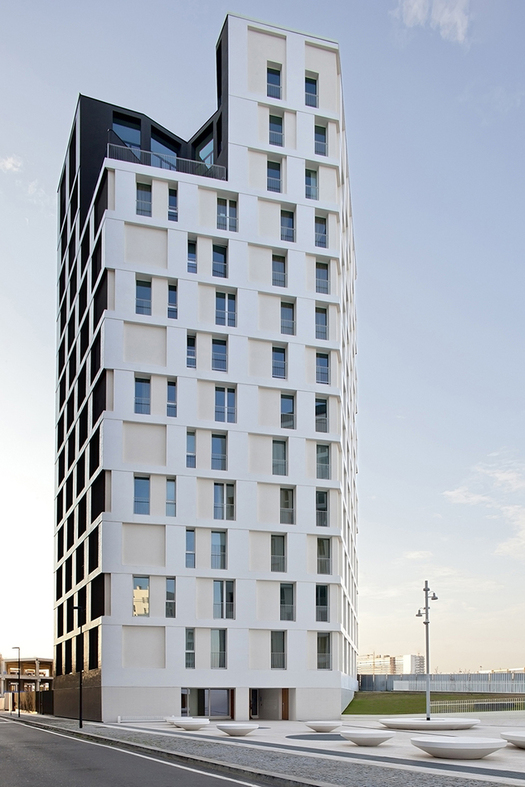
Photo by Alessandra Bello
-

Photo by Alessandra Bello
-

Photo by Alessandra Bello
-

Photo by Alessandra Bello
-

Photo by Alessandra Bello
-

Photo by Alessandra Bello
-

Photo by Alessandra Bello
-

Photo by Alessandra Bello
-
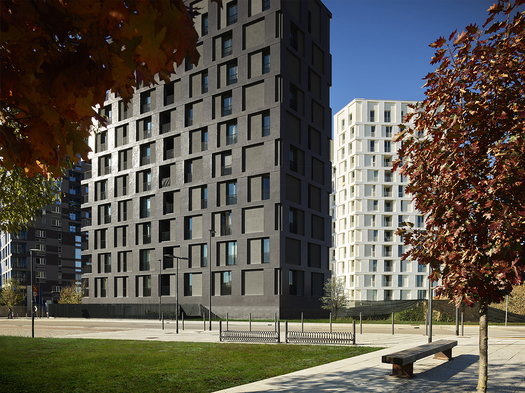
Photo by Pietro Savorelli
-

Photo by Pietro Savorelli
-
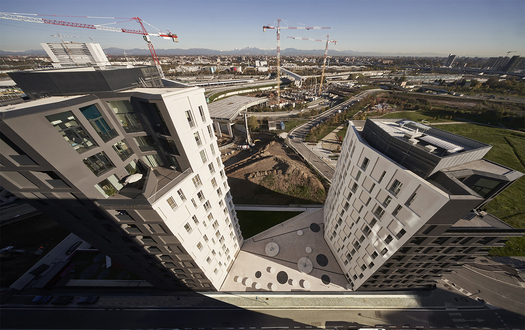
Photo by Pietro Savorelli
-
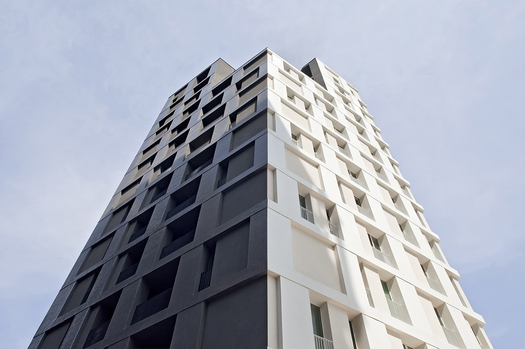
Photo by Alessandra Bello
-

Photo by Alessandra Bello
-
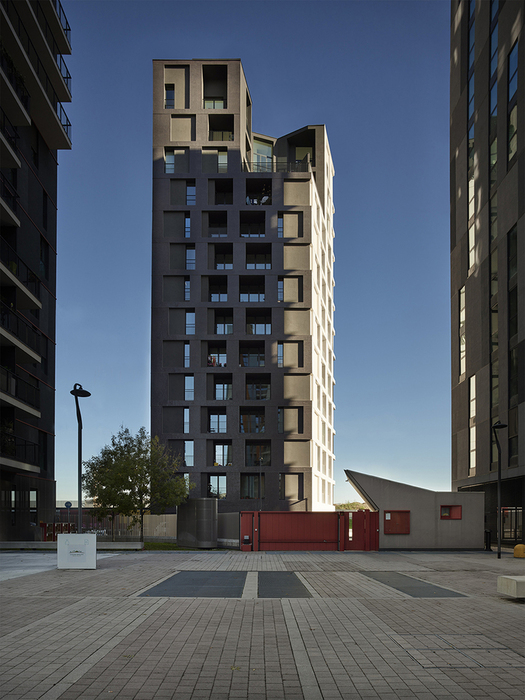
Photo by Pietro Savorelli
-

Photo by Alessandra Bello
-

Photo by Alessandra Bello
-
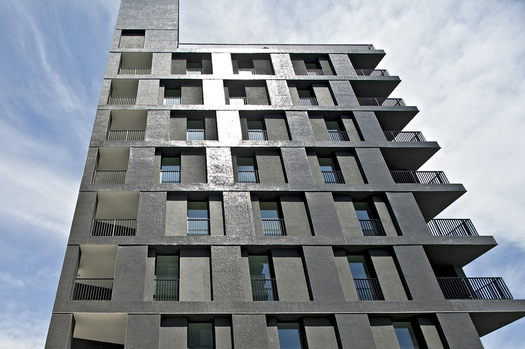
Photo by Alessandra Bello
-
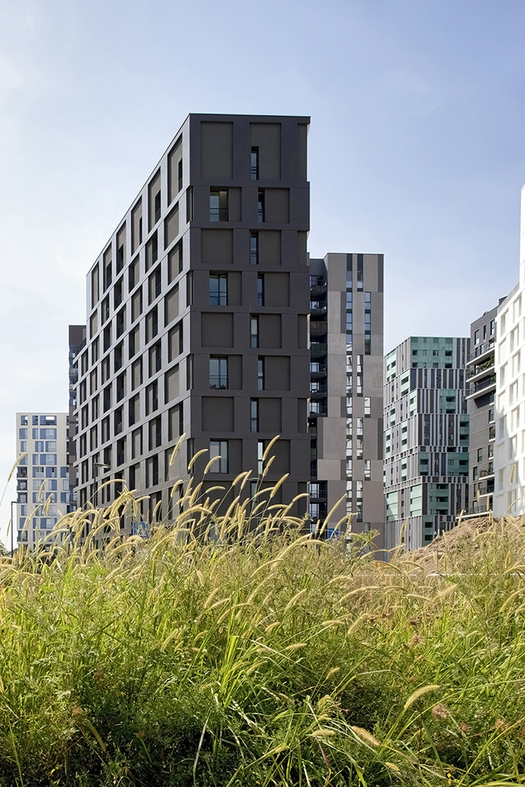
Photo by Alessandra Bello
-
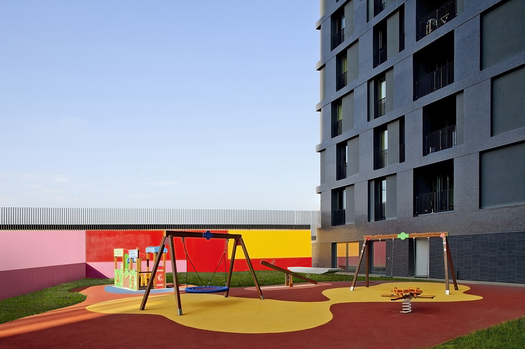
Photo by Alessandra Bello
-

-

-

-

R11 Residential Towers in Cascina Merlata, Milan, Italy, 2022
The plot R11 is located at the northern end of the Highrise Village, bordering the park Cascina Merlata, the largest housing development in Europe. Initially planned as a volume surrounded by a fence and meant to be a ‘gated community’, the architects proposed to break the plot into two parts to give back to the community a public space and create an urban door between the Village and the Park, the latter extending as a public square, inside the plot.
The idea of a new community space, borrowing from the urban concept of the "Venetian campo" moved to Milan to create a square, a public space that connects the two residential towers, strengthening their community identity though the design of a place for all people.
The new Piazza relates the different heights of the pedestrian space and the park and create a threshold between the built and nature.
The project is critical of the concept of the 'gated community'. By giving public space to the surrounding community, C+S Architects physically design a square in material and chromatic continuity with the towers, which underlines the importance of sharing the collective space as a key point to strengthen the identity of the community. The square is a free, durable, open public space, accessible to all (including the visually impaired) that connects the difference in height of about two meters between the park and the street, through a series of ramps. But it is also a fun public space capable of transforming itself into a playground for children or skaters, for rest and play.
Made of white Prun stone, the square is dotted with a series of circular benches, which have been positioned to prevent the intrusion of cars. The mono-material and monochromatic space underlines the urban role of the complex as a threshold space between the park and the city. A difference in height of about two meters between the road and the park is overcome with the design of 5% sloped planes.
On the sides of the square two towers (fourteen and twelve meter high) define the space and seem to have been generated from the same volume, split in two by the public space. The two towers develop 10,830 square meters, distributed in 103 flats, all sold as affordable houses, according to the Regional regulations. The ground floor of both towers houses the entrance hall and service spaces, such as bicycle storage, common room, gym, laundry and storage room for separate waste collection. C+S project was a pioneer, in 2011, in introducing ESG drivers when inserting hybrid and common spaces within the residential complex.
The towers are arranged on two underground levels of parking for 104 cars, technical spaces and cellars as well as a colorful outdoor playground for children that was designed with a participatory project in collaboration with the Social Housing Foundation.
The total one hundred and three apartments, all sold in record time immediately after the construction site started, are built in energy class A and provide, according to the well-established sustainability strategies, a geothermal district heating and cooling system on the floor, one for controlled mechanical ventilation and photovoltaic systems, in order to reduce emissions and consumption.
The towers, bent, modeled and oriented to ensure that all the apartments could enjoy the view of the surrounding green, have a different material treatment on the fronts: the elevations, strongly rhythmic, are designed by full-height windows, which are cladded with the same white stone of the square up to the first level, creating a continuity between the horizontal and vertical planes, while on the outside, towards the village, they are finished with a darker coating, chromatically matching the adjacent towers . The darker color of the side fronts helps to underline the strength of the incision of the collective space of the square, which is transformed into the 'door to the park'.
From the second floor the cladding of the towers becomes a glass mosaic, recalling some finishing of the masters of Italian Architecture (Gio Ponti's precious interiors or Moretti's light textures), and to mean that the city is defined by precious urban interiors to inhabit.
The finish of the facades (beyond the ground floor) consists of a coating insulation, on which the Sicis-type glass mosaic is glued, with 1.5x1.5 cm tesserae. Sicis-type glass mosaic is not a flat coating. Each tile is variable in section. This choice allows the façade to transform itself by reflecting the light in a different way every minute of the day. The façade seems to light up and change: it is activated by the variation of daylight and climatic changes.
The composition of the façade is simple and has a regular mesh on which a series of differentiated stratifications are drawn in depth. The main pattern is determined by the regular design of a grid of large square openings that defines the size of the loggias. The texture is thus characterized by the irregular alternation of loggias, windows and blind parts covered with colors in accordance with the mosaic. Each material was also chosen for its durability and recyclability over time.
With the completion of the two R11 towers and the square, C+S Architects officially enter that contemporary laboratory, that has become the city of Milan in the last decade, while remaining consistent with their own research. "C+S firmly believe in the potential of a free, well-designed public space capable of being activated by people, their memories, their dreams and their experiences that will help create future memories and identities" - write Carlo Cappai and Maria Alessandra Segantini - “For this reason, through the development projects in which we are involved, we work to give back to all citizens the seeds of a shared durable and well-designed public space that they can cultivate with their actions”.
Torri residenziali R11 - Cascina Merlata
Milano, Italia, 2021
Il lotto R11 si trova all'estremità settentrionale del Villaggio Highrise di Cascina Merlata, confinante con l’omonimo parco in uno degli sviluppi residenziali di maggiori dimensioni in Europa. Inizialmente previsto come un unico volume circondato da una recinzione e spazi condominiali, il progetto ha proposto al cliente di spezzare il volume in due parti per restituire alla comunità uno spazio pubblico e creare una porta urbana tra Villaggio e il Parco che si insinua e si estende all’interno del lotto.
L’idea di un “campo veneziano”, luogo per eccellenza della condivisione di esperienze, si trasferisce a Milano per disegnare una Piazza, uno spazio pubblico che connette le due torri residenziali, ne rafforza l’identità, relaziona le differenti quote dello spazio pedonale e del parco e crea una transizione morbida tra l’edificato e la natura.
Il progetto è critico nei confronti del concetto di 'gated community'. Regalando spazio pubblico alla comunità circostante, lo studio C+S disegna fisicamente una piazza in continuità materica e cromatica con le torri, il che sottolinea l'importanza della condivisione dello spazio collettivo come punto chiave per rafforzare l'identità della comunità. La piazza è uno spazio pubblico libero, durevole, aperto, accessibile a tutti (compresi i non vedenti) che collega la differenza di quota di circa due metri tra il parco e la strada, attraverso una serie di rampe. Ma è uno spazio pubblico divertente e capace di trasformarsi in spazio gioco per i bambini o per gli skaters, nonché di riposo grazie a una serie di sedute circolari che la punteggiano.
Realizzata in pietra bianca di Prun, la piazza è costellata da una serie di panchine circolari, che sono state posizionate per evitare l’intrusione delle automobili. Lo spazio mono-materico e monocromatico sottolinea il ruolo urbano del complesso come spazio soglia tra il parco e la città. Il terreno della piazza è un paesaggio artificiale in pietra bianca, modellato e distorto per rendere continuo lo spazio pedonale lastricato della piazza e la superficie del parco. Un dislivello di circa due metri tra la strada e il parco viene superato con il disegno di piani inclinati disegnati dal verde e dalla pavimentazione sui quali si innesta una rampa con pendenza del 5%.
Ai lati della piazza vengono disposte due torri, di quattordici e dodici piani, che sembrano sorgere dallo stesso volume, spaccato in due dallo spazio pubblico. Le due torri sviluppano 10.830 mq di SLP, distribuiti in 103 appartamenti, tutti venduti a prezzo calmierato. Il piano terra di entrambe le torri ospita l'androne e spazi accessori oltre ai servizi alla residenza quali deposito biciclette, sala comune, palestra, lavanderia e locale deposito per la raccolta differenziata. Il progetto di C+S è stato pioniere, nel 2011, nell’inserire spazi ibridi e comuni all’interno dei complessi residenziali milanesi.
Le torri sono disposte su due livelli interrati di parcheggio per 104 posti auto, locali tecnici e cantine oltre a un colorato parco giochi all'aperto per bambini che è stato disegnato con un progetto partecipativo in collaborazione con la Fondazione Social Housing.
I centotre alloggi complessivi, tutti venduti a tempo di record subito dopo l’avvio del cantiere, sono realizzati in classe energetica A e prevedono, secondo le ormai consolidate strategie della sostenibilità, un sistema di teleriscaldamento e raffrescamento geotermico a pavimento, uno di ventilazione meccanica controllata e impianti fotovoltaici, allo scopo di ridurre le emissioni e i consumi.
Le torri, piegate, modellate e orientate per fare in modo che tutti gli appartamenti possano godere dell’affaccio sul verde, presentano un trattamento materico differente sui fronti: i prospetti, fortemente ritmati dalla scansione delle finestre a tutta altezza, verso la piazza sono rivestiti della medesima pietra bianca fino al primo livello creando una continuità tra il piano orizzontale e quello verticale, mentre all’esterno, verso il village, sono rifinite con un rivestimento scuro, accordandosi cromaticamente alle torri adiacenti. Il colore più scuro dei fronti laterali concorre a sottolineare la forza dell’incisione dello spazio collettivo della piazza, che si trasforma nella ‘porta del parco’.
Dal secondo piano il rivestimento delle torri diventa mosaico di vetro, richiamando gli interni preziosi Gio Ponti o le tessiture di luce di Moretti, e a significare che anche la città ha nello spazio pubblico il suo interno da abitare.
La finitura delle facciate (oltre il piano terra) è costituita da una parete esterna a cappotto su cui è incollato il mosaico vetroso tipo Sicis, con tessere di 1,5x1,5 cm. Il mosaico di vetro tipo Sicis non è un rivestimento piatto. Ogni tessera è variabile in sezione. Questa scelta permette alla facciata di trasformarsi riflettendo la luce in modo diverso in ogni minuto della giornata. La facciata sembra illuminarsi e cambiare: è attivata dalla variazione della luce diurna e dalle trasformazioni climatiche.
La composizione della facciata è semplice e presenta una maglia regolare su cui si disegnano in profondità una serie di stratificazioni differenziate. Lo schema principale è determinato dal disegno regolare di una griglia di grandi aperture quadrate che definisce la dimensione delle logge. La texture si caratterizza così per l'alternanza irregolare di logge, finestre e parti cieche rivestite con colorazioni in accordo con il mosaico. Ogni materiale è stato scelto anche per la sua durabilità e riciclabilità nel tempo.
Con il completamento delle due torri R11 e la piazza lo studio C+S entra ufficialmente in quel laboratorio del contemporaneo che è diventata Milano nell’ultimi decennio, rimanendo tuttavia sempre coerenti con la propria ricerca e con la propria costante traduzione. “C+S crede fermamente nelle potenzialità di uno spazio pubblico libero, ben progettato e capace di essere attivato dalle persone, dai loro ricordi, dai loro sogni e dalle loro esperienze che contribuiranno a creare memorie e identità future” - scrivono Carlo Cappai e Maria Alessandra Segantini - “Per questo, attraverso i progetti di sviluppo in cui siamo coinvolti, lavoriamo per restituire a tutti i cittadini i semi di uno spazio pubblico condiviso che possono coltivare con le loro azioni”.
Awards
Bibliography
Gussoni, E., Around the square, in: <<Abitare>>, web page
351 KB
Credits
Head designers: C+S Architects, Carlo Cappai, Maria Alessandra Segantini
Client: Investire sgr, Euromilano spa
C+S Architects Team: Mara Mior, Davide Testi